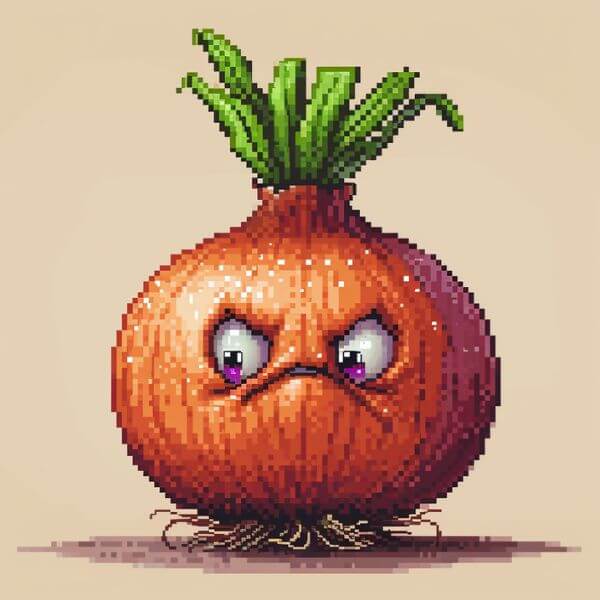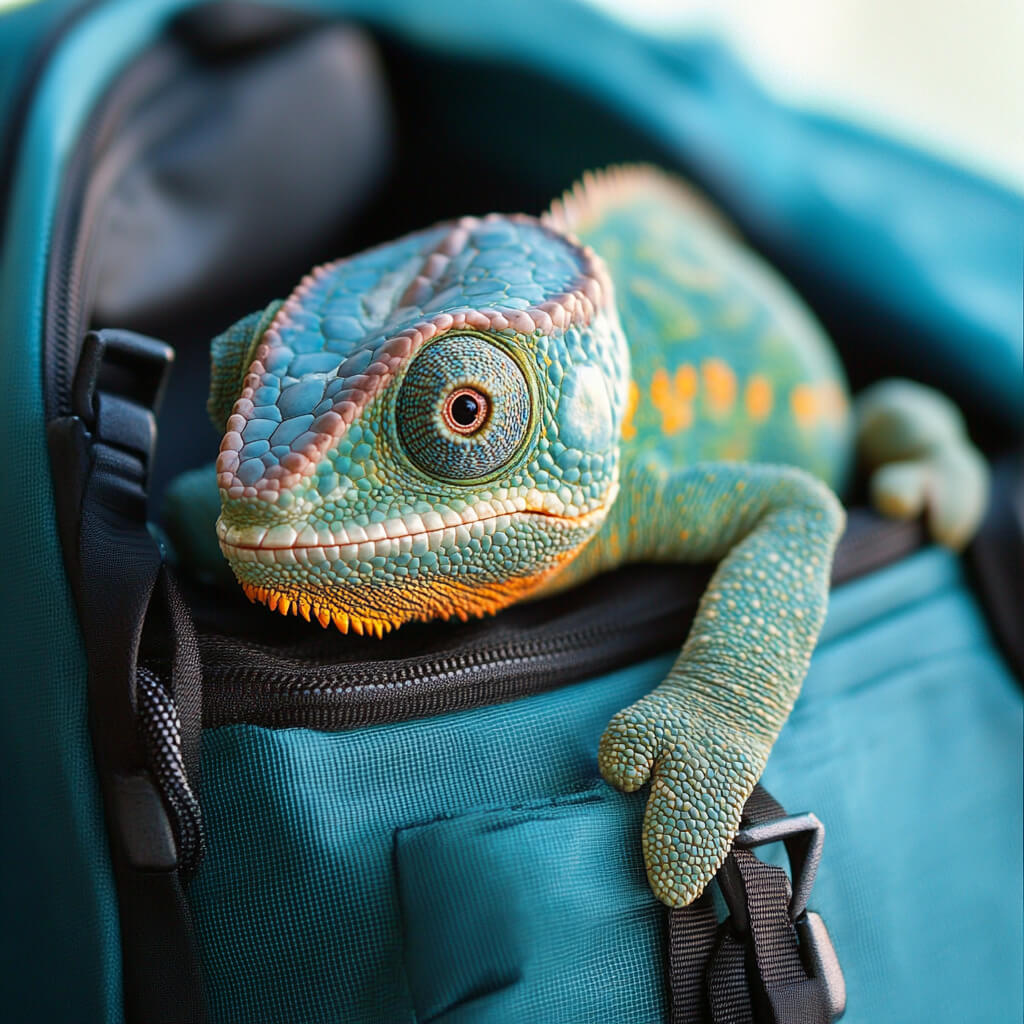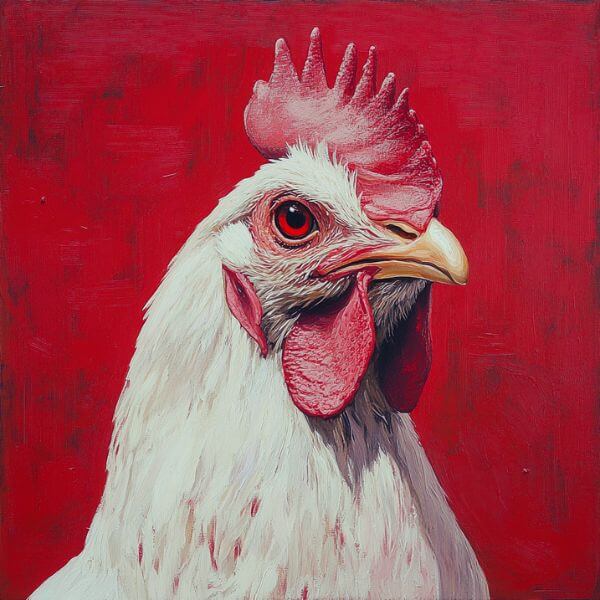No, chameleons should not eat onions.
Onions are toxic to chameleons and can cause serious health issues if ingested.
The compounds in onions can damage a chameleon’s red blood cells, leading to anemia and other complications.
Why are onions toxic to chameleons?
Onions contain sulfur compounds that are harmful to many reptiles, including chameleons. These compounds can cause:
- Digestive upset
- Hemolytic anemia (destruction of red blood cells)
- Liver damage
- Respiratory problems
Foods to avoid feeding chameleons
Onions aren’t the only food that’s dangerous for chameleons. Here’s a table of other foods you should avoid:
| Food | Reason to Avoid |
| Avocado | Contains persin, toxic to many animals |
| Citrus fruits | Too acidic, can cause digestive issues |
| Dairy products | Chameleons are lactose intolerant |
| Processed foods | Lack nutritional value, may contain harmful additives |
| Chocolate | Contains theobromine, toxic to reptiles |
| Rhubarb | Contains oxalic acid, harmful to chameleons |
Safe and nutritious foods for chameleons
Now that we know what chameleons shouldn’t eat, let’s focus on the foods that are safe and beneficial for them.
Safe vegetables for chameleons
Chameleons can enjoy a variety of vegetables as part of their diet. Some safe options include:
- Collard greens
- Mustard greens
- Dandelion greens
- Butternut squash
- Bell peppers
- Carrots (in moderation)
Chameleon nutrition needs
A balanced diet for chameleons typically consists of:
- Insects (primary food source)
- Leafy greens and vegetables
- Fruits (in small amounts)
- Supplements (as recommended by a reptile veterinarian)
Balanced chameleon meal plan
Creating a balanced chameleon meal plan is crucial for your pet’s health. Here’s a simple weekly plan:
| Day | Main Food | Supplementary Food |
| Monday | Crickets | Collard greens |
| Tuesday | Dubia roaches | Butternut squash |
| Wednesday | Mealworms | Mustard greens |
| Thursday | Crickets | Bell peppers |
| Friday | Silkworms | Dandelion greens |
| Saturday | Dubia roaches | Carrots (small amount) |
| Sunday | Variety day | Mix of safe vegetables |
Remember to dust insects with calcium powder 2-3 times a week and use a multivitamin supplement once a week.
Understanding chameleon nutrition
Proper nutrition is vital for your chameleon’s health, growth, and longevity. Let’s break down the essential nutrients they need:
- Protein: Obtained primarily from insects
- Calcium: Crucial for bone health and egg production in females
- Vitamins A and D3: Important for eye health and calcium absorption
- Hydration: Clean water for drinking and misting
Role of fruits and vegetables in chameleon diet
While insects make up the bulk of a chameleon’s diet, fruits and vegetables provide essential vitamins and minerals.
They also add variety and enrichment to your pet’s meals.
Chameleon diet chart
Here’s a simple chameleon diet chart based on life stage:
| Life Stage | Diet Composition |
| Baby (0-3 months) | 80% small insects, 20% finely chopped vegetables |
| Juvenile (3-12 months) | 70% insects, 30% vegetables |
| Adult (1+ years) | 60% insects, 40% vegetables, occasional fruit |
Chameleon feeding habits and best practices
Understanding your chameleon’s natural feeding habits can help you provide the best care possible.
Chameleon feeding schedule: How often do chameleons eat?
The chameleon feeding schedule varies based on age:
- Baby chameleons: Feed 2-3 times daily
- Juveniles: Feed 1-2 times daily
- Adults: Feed every other day or 3-4 times a week
Typical chameleon eating behavior
Chameleons are known for their unique feeding method:
- They use their long, sticky tongue to catch prey
- They prefer moving food items
- They may be hesitant to eat from bowls or stationary food sources
Tips for encouraging healthy eating habits
- Offer food at the same times each day
- Use a feeding cup or place insects on plants to encourage natural foraging
- Mist vegetables to make them more appealing
- Rotate food items to provide variety
Proper food preparation for chameleons
Preparing food correctly ensures your chameleon gets the most nutritional benefit and reduces the risk of illness.
How to prepare vegetables for chameleons
- Wash all produce thoroughly
- Cut into small, manageable pieces
- Remove any seeds or pits
- Lightly steam harder vegetables to soften them
Serving size for chameleon meals
A good rule of thumb is to offer as many insects as your chameleon can eat in 5-10 minutes.
For vegetables, provide a small handful, about the size of your chameleon’s head.
Best methods to offer food to chameleons
- Use a shallow feeding dish for vegetables
- Place insects in a smooth-sided container to prevent escape
- Offer food at your chameleon’s eye level or slightly above
- Use tongs to hand-feed insects occasionally for bonding
Toxic foods and safe alternatives
We’ve covered that onions are toxic to chameleons, but there are safe alternatives you can offer.
Safe alternatives to onions for chameleons
Instead of onions, try these flavorful and nutritious options:
- Bell peppers (all colors)
- Zucchini
- Squash
- Pumpkin (cooked)
- Sweet potato (cooked)
Healthy treats and variety in chameleon diet
Occasional treats can add excitement to your chameleon’s diet:
- Waxworms (high in fat, use sparingly)
- Hornworms
- Small pieces of mango or papaya (without seeds)
- Flower petals (pesticide-free hibiscus or nasturtium)
Combining insects and plant matter
Aim for a diet that consists of:
- 60-70% insects
- 30-40% vegetables and leafy greens
- Occasional fruit (no more than 5% of diet)
Importance of variety in chameleon nutrition
Offering a variety of foods ensures your chameleon receives a wide range of nutrients.
Rotate between different insects and vegetables throughout the week.
Role of supplements in chameleon diet
Supplements play a crucial role in preventing nutritional deficiencies:
- Calcium powder: Dust on insects 2-3 times per week
- Multivitamin powder: Use once a week
- Gut-loading: Feed insects nutritious foods before offering them to your chameleon
Conclusion
While chameleons cannot eat onions due to their toxicity, there are plenty of safe and nutritious foods you can offer your pet.
By providing a varied diet of insects and vegetables, supplementing appropriately, and following proper feeding practices, you can ensure your chameleon stays healthy and thrives.
Remember, when in doubt about your chameleon’s diet or health, always consult with a reptile veterinarian for personalized advice.
FAQs
What vegetables can chameleons eat?
Chameleons can eat a variety of vegetables, including collard greens, mustard greens, dandelion greens, and bell peppers.
How often should I feed my chameleon?
Adult chameleons should be fed every other day or 3-4 times a week. Younger chameleons require more frequent feeding.
Are there any fruits that are safe for chameleons?
Yes, chameleons can eat small amounts of fruit like papaya, mango, and berries as occasional treats.
How can I tell if my chameleon is eating enough?
A healthy chameleon should maintain a good body weight, have clear eyes, and display normal activity levels. Regular weight checks can help monitor their food intake.
What should I do if my chameleon eats something toxic?
If you suspect your chameleon has eaten something toxic, contact a reptile veterinarian immediately for guidance.







Leave a Reply